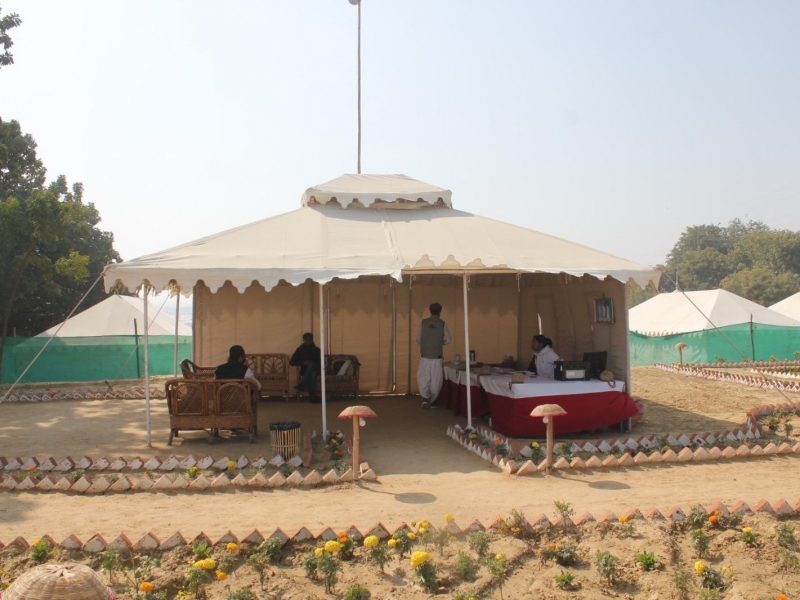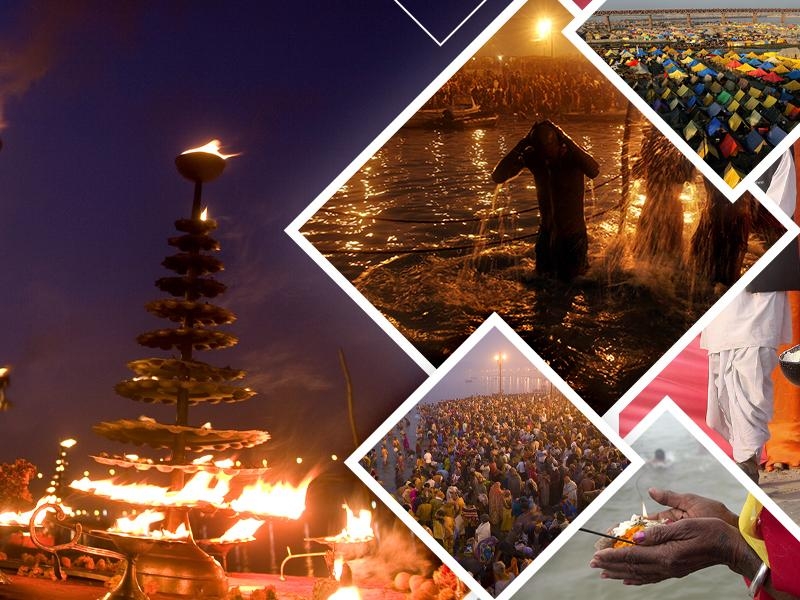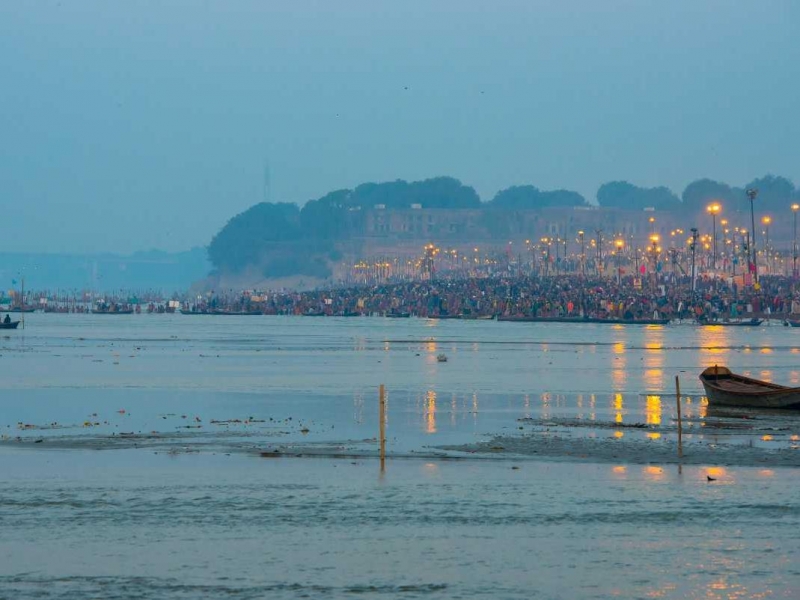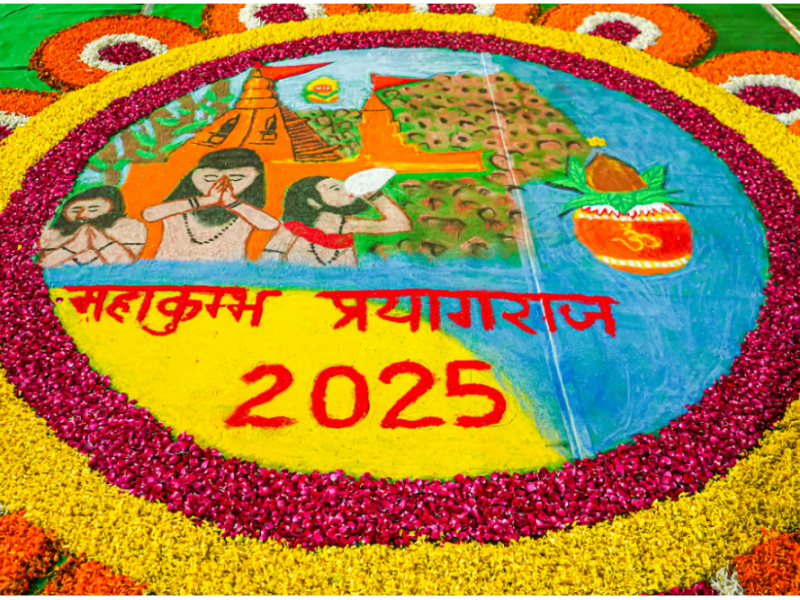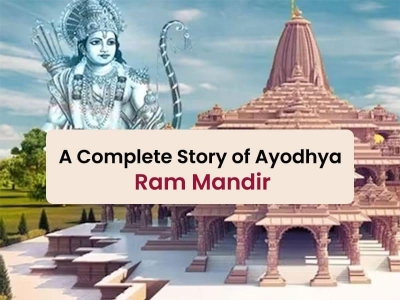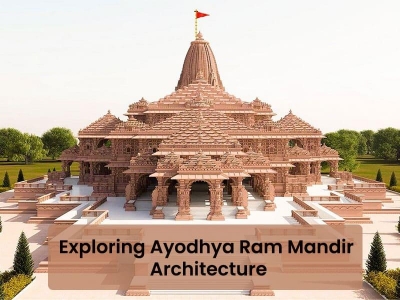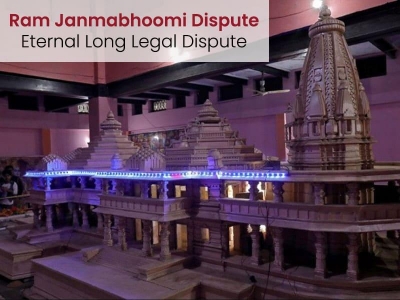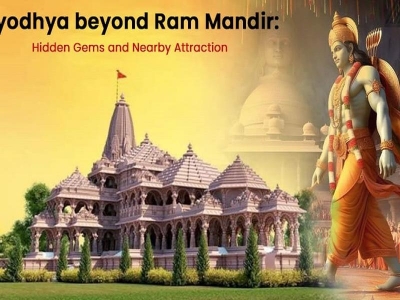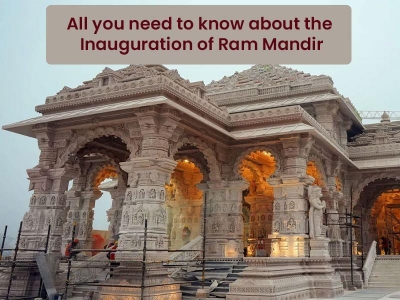Discover the extensive history of the Ram Mandir in Ayodhya, tracing its roots from 1528 to 2024. From its origins to the present day, witness the journey of this iconic temple dedicated to Lord Ram. Dive into historical events, controversies, and the significant milestones that shaped the Ram Mandir's narrative over the centuries. If you are keen to know about the complete journey of the temple, you are at the right place, as you will get to know everything about the sacred Ram Mandir. Fasten your seat belts as we are going on a journey of Ayodhya and the legacy of Ram Mandir. Want to travel to Ayodhya? We have got you covered. You can explore all the travel details to Ayodhya on this page.

The Ram Mandir in Ayodhya has to be one of the most historical and influential religious places in the world. Ayodhya is significant for every devotee of the Hindu religion as it is considered the birthplace of the Hindu God, Lord Ram. The place is the nation's heartbeat and, for centuries, has been the talking point in the country.
According to the Hindu Granth Ramayana, Lord Rama was born in Ayodhya to Raja Dasharatha and Kaushalya. The influence and teachings of Lord Rama have been so significant that for every Hindu, the birthplace of Lord Rama is a sacred place.
But history hasn't been kind, as the Ram Mandir in Ayodhya has been a controversial issue for centuries. The Ram Janm Bhoomi Birthplace is the place where the temple is being made, and the wishes of millions of people have come true as the temple is finally created, but we cannot forget the vast history of the place. To understand the joy and celebrations of the inauguration of Ram Mandir, it is crucial that we first understand its incredible history.
1. Medieval Times
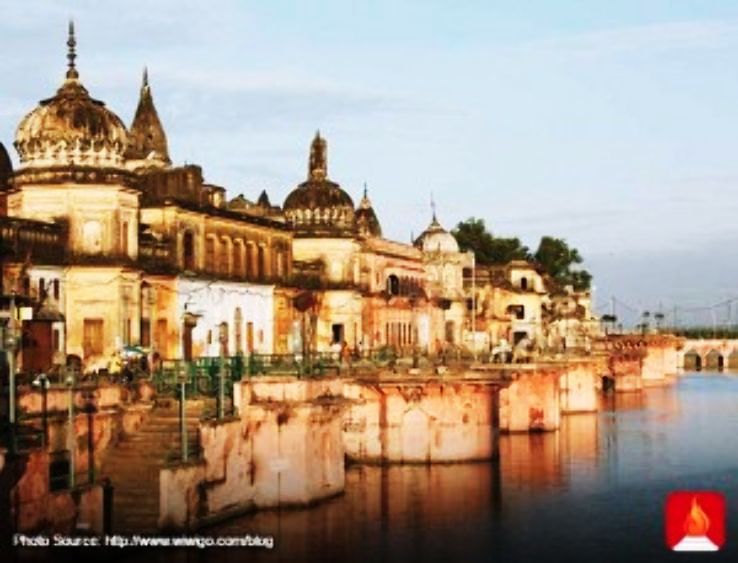
In Medieval times, there wasn't any issue or controversy with the birthplace as people used to visit the place and worship. The invasion of the Mughals sparked controversy as the Mandir was demolished, and Babri Masjid was established on it in the 16th century. This is proved by the archaeological surveys that showcased Hindu Idols and other elements related to the temple.
Then, from the 18th century, the issue intensified, and it was in 1853 that the issue was taken to court, which led to the beginning of legal disputes.
In 1859, the British colonial administration made a fence on the site to separate the inner and outer courtyards. Muslims were given access to the inner courtyard, while Hindus were allowed to worship in the outer courtyard.
2. Over the Years

Throughout history, the Ram Mandir in Ayodhya has been a controversial matter as mainly the temple has been closed, and security officials protected the land to ensure that no harm is done to people of any community.
The land has gone through various archaeological surveys to prove that the land is actually the birthplace of Lord Rama. The nationwide issue has always been the top news on every news channel because of the emotional connection with the public.
In the 1990s, the Ram Mandir became a household issue as in 1992, the Babri Masjid was demolished by the Kar Sewaks during the Rath Yatra. This led to communal violence not just in India but also in other neighbouring countries. A lot of people died, and a lot of property was damaged because of the riots.
3. Modern Era

At one point, it felt that the monumental issue would take ages in court to get a decision. But the wait was over in 2019 as the Honourable Supreme Court of India delivered its judgement and ruled in favour of the construction of the Ram Temple at the disputed site. This was a significant historical moment as the decision people had been waiting for finally came.
After the Supreme Court's verdict, the Government of India didn't take much time as the temple construction started in 2020. The judgement was a huge chapter in the history of the temple as it ended the centuries-long legal dispute and gave clearance to the construction of the temple.
On 5th August 2020, there was the official Bhoomi Poojan Ceremony, and a silver brick of 40 kg was installed as the foundation stone By Honourable Prime Minister Narendra Modi. The Bhoomi Poojan included soil sent from various Hindu temples, Gurudwaras and Jain temples to bless the Ram Mandir.
In just a few years, the controversial and highly debated topic of land dispute came to an end, and the construction of the monumental temple began. According to the verdict of the Supreme Court of India, a trust was to be established to look after the construction of the temple. In February 2020, the Shri Ram Janmabhoomi Teerth Kshetra Trust was set up by the Government of India. The trust has 15 trustees, out of which 9 are permanent and 6 are nominated members.
In around three years, the construction of the Ram Temple was finished. On the 22nd of January 2024, a new chapter will be written in the history of Ayodhya as the temple will be inaugurated.
Donations from all parts of the world were received for the construction of the Ram Mandir. On 1st January 2021, the former President of India, Ramnath Kovind, made the first contribution towards the construction of the temple by donating more than Rs 5 lakh. This influenced people from different sections of society to come forward and donate.
While the temple has been in the limelight of Ayodhya, the sacred place is blessed with various iconic places that you cannot miss on your trip to Ayodhya.
The vivid history of the sacred Ram Mandir in Ayodhya is proof that hard work, passion and dedication never go in vain as the struggle of millions of families across India became fruitful and finally, the temple will be constructed.
Recommended For You
-
 Best Places to Stay During Kumbh 2025: From Tents to Luxury Hotels
Best Places to Stay During Kumbh 2025: From Tents to Luxury Hotels
-
 The Ultimate Guide to Maha Kumbh Mela 2025 at Prayagraj
The Ultimate Guide to Maha Kumbh Mela 2025 at Prayagraj
-
 Understanding the Importance of the Sangam: The Confluence of Faith
Understanding the Importance of the Sangam: The Confluence of Faith
-
 The History and Mythology of Kumbh Mela: A Journey Through Time
The History and Mythology of Kumbh Mela: A Journey Through Time
-
 Best Places to Eat in Goa: Indulge in a Culinary Delight
Best Places to Eat in Goa: Indulge in a Culinary Delight
-
 The Future of Drone Tourism: How Drones are Changing the Travel Industry
The Future of Drone Tourism: How Drones are Changing the Travel Industry
